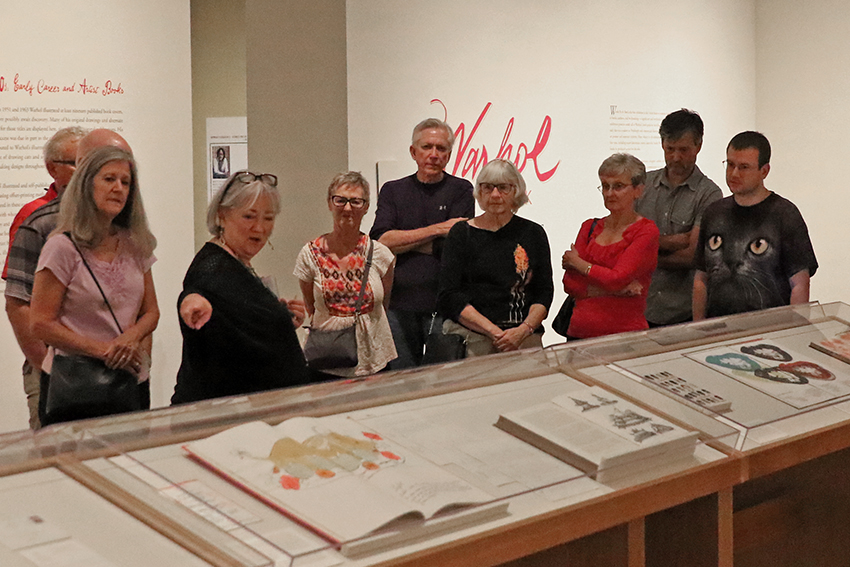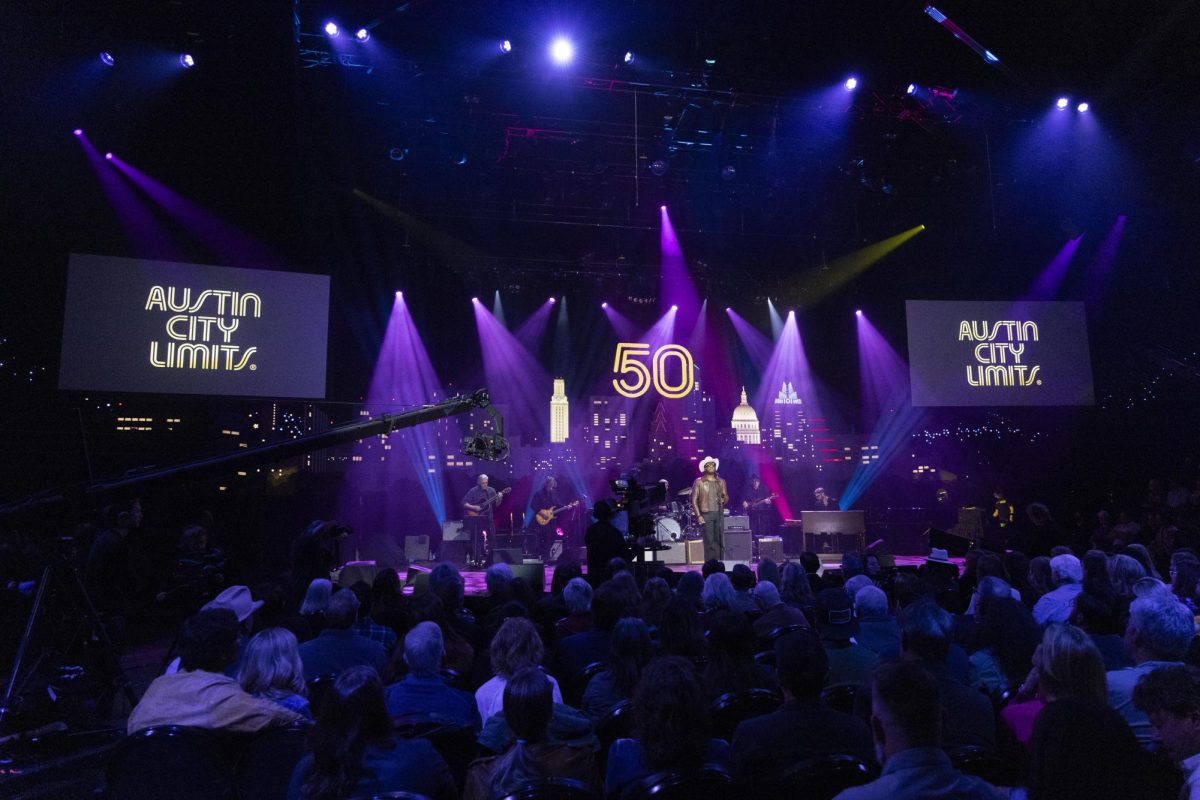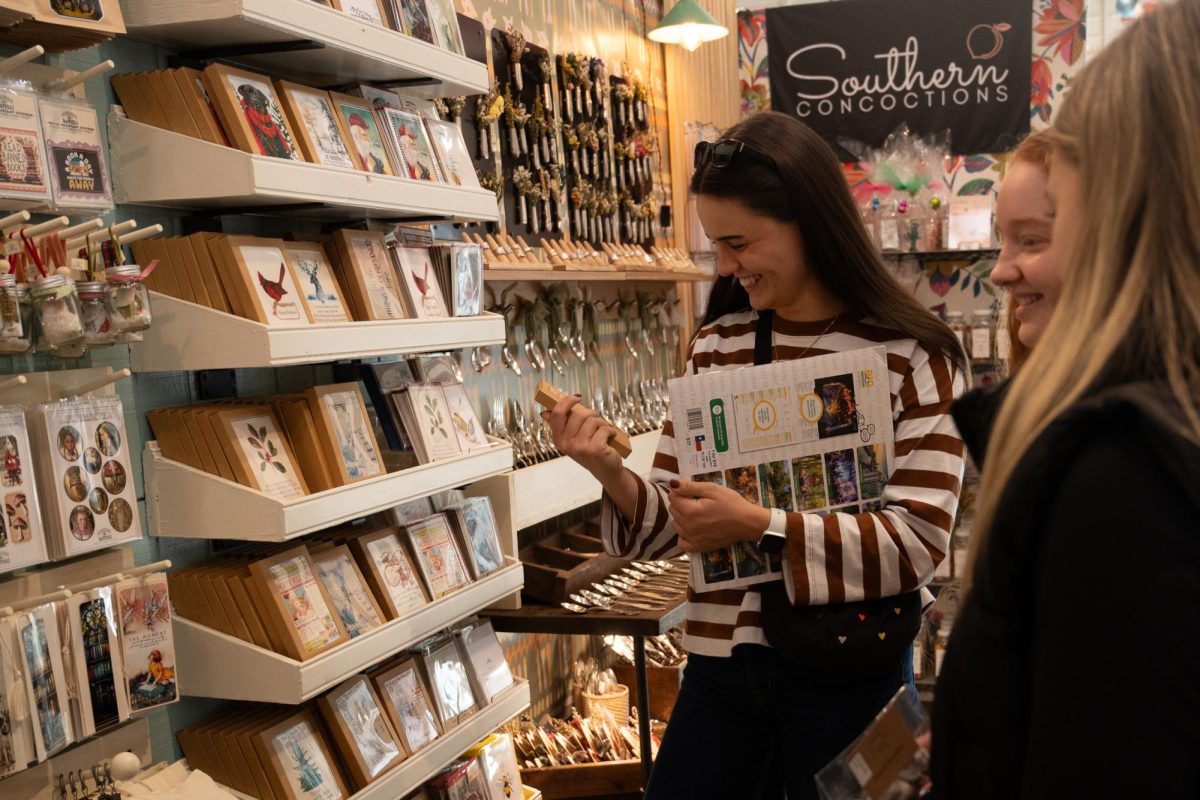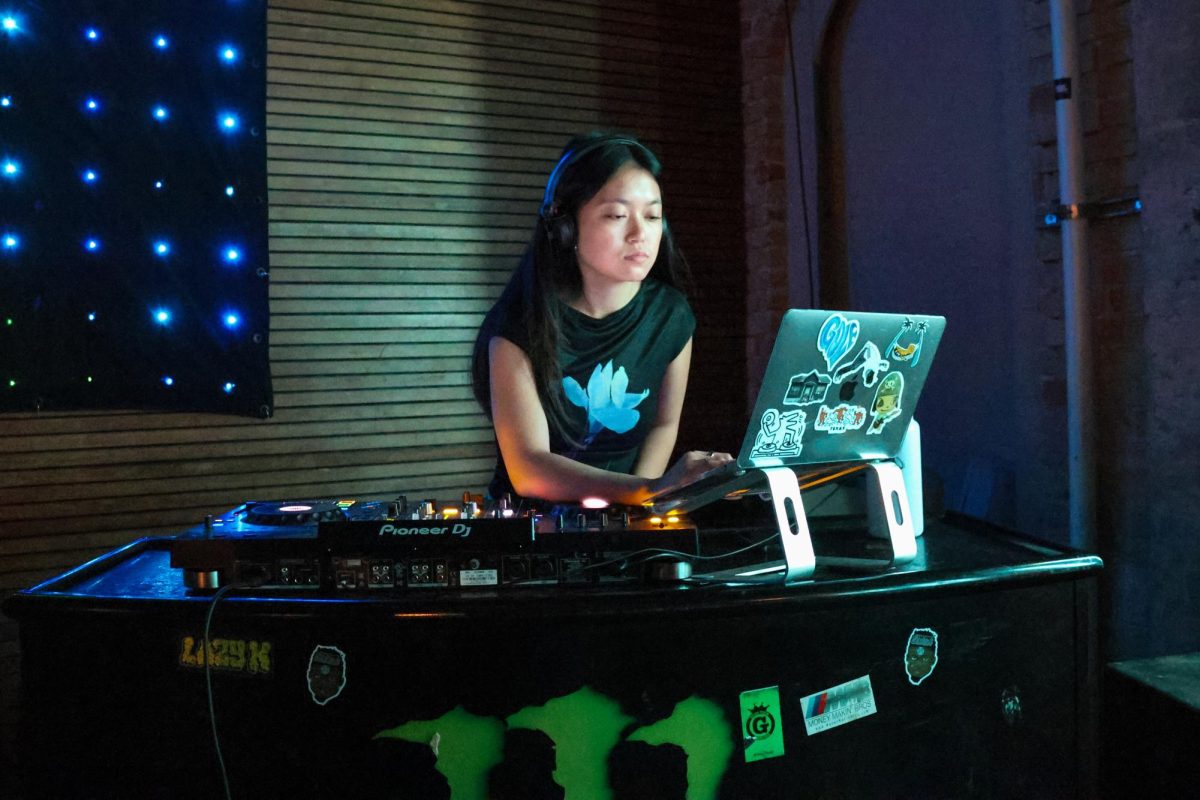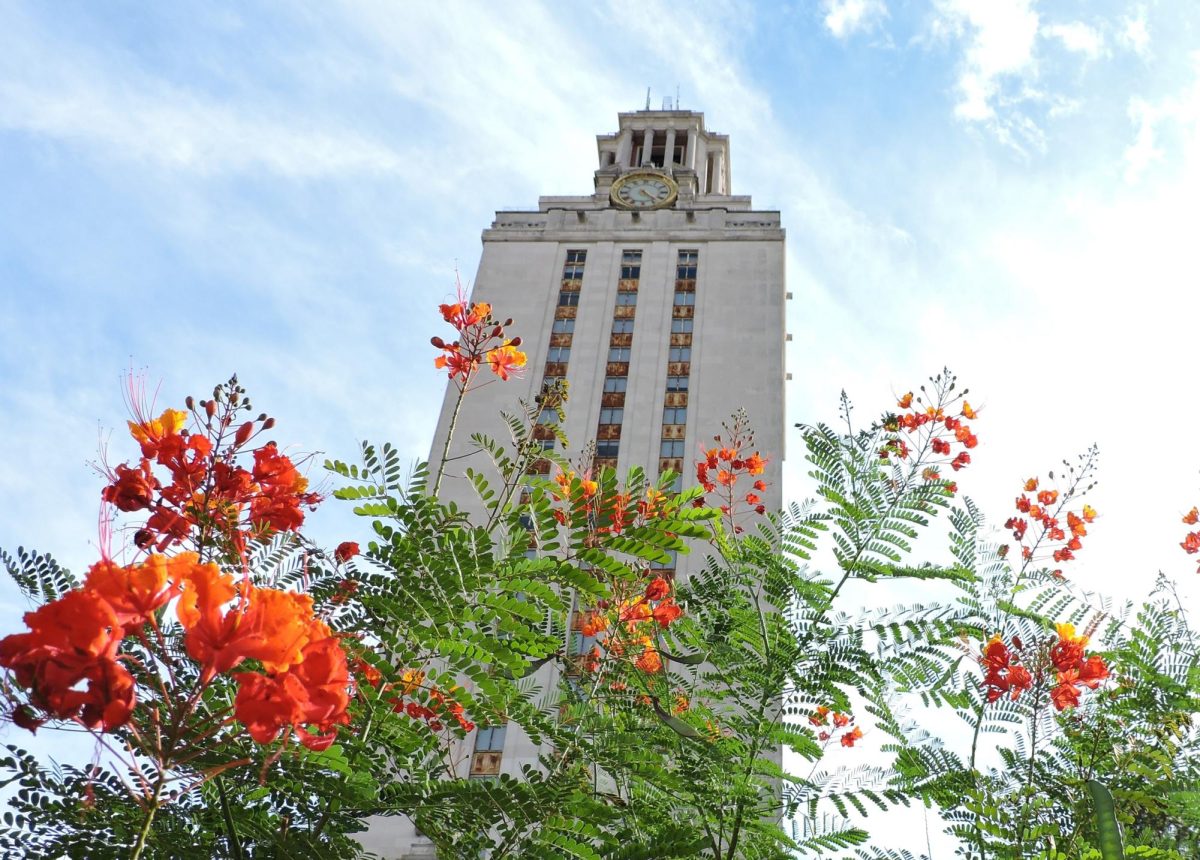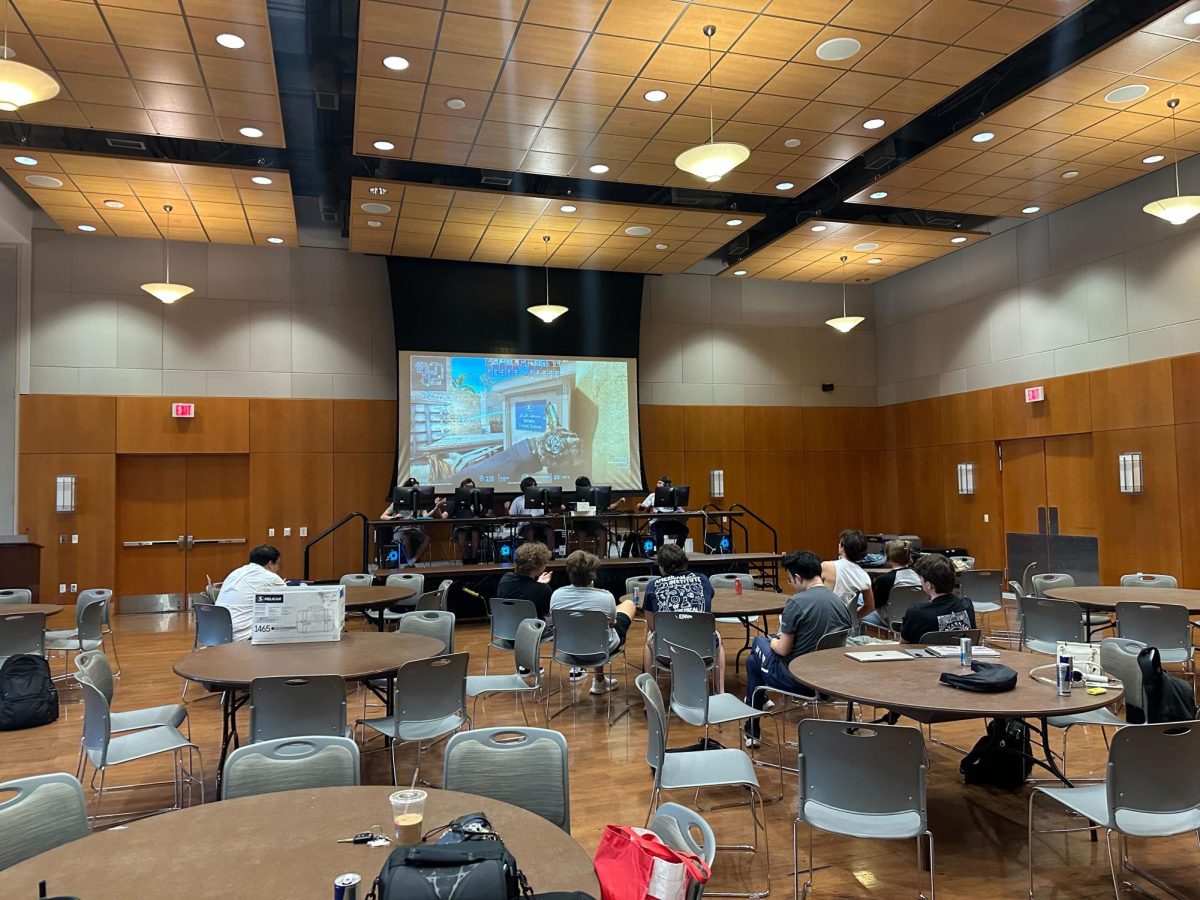Before he was the “King of Pop Art,” selling paintings for tens of millions of dollars and hosting parties for some of the biggest names in pop culture, Andy Warhol was a graphic designer. His advertisements, product promotions, book illustrations and jackets made him one of the most successful commercial artists of the ’50s. Even after he became more of a fine artist, Warhol still revisited his commercial and illustrative works, although his more iconic silk-screen prints and portraits often overshadow them.
On Oct. 16, the Blanton Museum of Art opened “Warhol By the Book,” a retrospective that includes more than 250 objects that span Warhol’s entire career, including illustrations, screen prints, photographs, paintings, films and book jackets.
The exhibition begins with a large listening room that includes many of the records Warhol designed artwork for. Spectators can grab a vinyl copy of many of these releases and listen to them on a record player. Records include The Velvet Underground’s iconic The Velvet Underground and Nico, the Rolling Stones’ Sticky Fingers and John Lennon’s Menlove Ave. Throughout the listening room there are also classic screen prints of ads he was commissioned to do for brands such as Volkswagen and Chanel.
Next, the viewer is presented with some of the work Andy Warhol did with his mother. Julia Warhola’s distinctive calligraphy is present in quite a few of Warhol’s ads and graphic design work in the 1950s and early 1960s. One of these projects is Warhol’s book “25 Cats Named Sam and One Blue Pussy,” a book that lovingly depicts the 25 Siamese cats the Warhol’s owned that all responded to the name Sam.
Later in the exhibition, visitors can see a cookbook that his friend Suzie Frankfurt and he made called “Wild Raspberries.” It satirizes the pretentious and pompous French cookbooks that were popular in the late ’50s, by relaying recipes for dishes such as Roasted Iguana Andalusian and Burmese lizard.
There are many collaborative works between Warhol and poet Ralph T. Ward throughout the exhibit. Ward was one of Warhol’s love interests and they worked on the books “Love is a Pink Cake” and “A is an Alphabet,” which combined Ward’s poems with Warhol’s sketch-like illustrations. These drawings look more similar to works by a young Pablo Picasso or Willem de Kooning rather than works by a renowned pop artist. At the same time, when placed side by side with his more iconic pop works, his sketches show how he is still grounded in the same aesthetic impulses that inspired his more famous works.
“He made his lifestyle and his interview persona part of his artwork,” said Jeannie McKetta, Ph.D. candidate at the Center for the Study of Modernism. “He cultivated this persona of being extremely superficial and not being very deep.”
The final room in the exhibit focuses on Warhol’s later works, especially his large silk-screened print portraits of writers and celebrities such as Truman Capote, Tennessee Williams and Dolly Parton.
Those interested in seeing Warhol’s “classic” works will not be disappointed, with his Campbell’s soup can painting, Marilyn portraits and one of his icon portraits of Mao all on display. These works by Warhol give the viewer a unique view of the notoriously flashy artist, who was known for his self-made persona.
The objects, paintings and drawings in “Warhol By the Book” pull the curtains away from Warhol’s persona and reveal the human beneath the celebrity that Andy Warhol was and continues to be.

